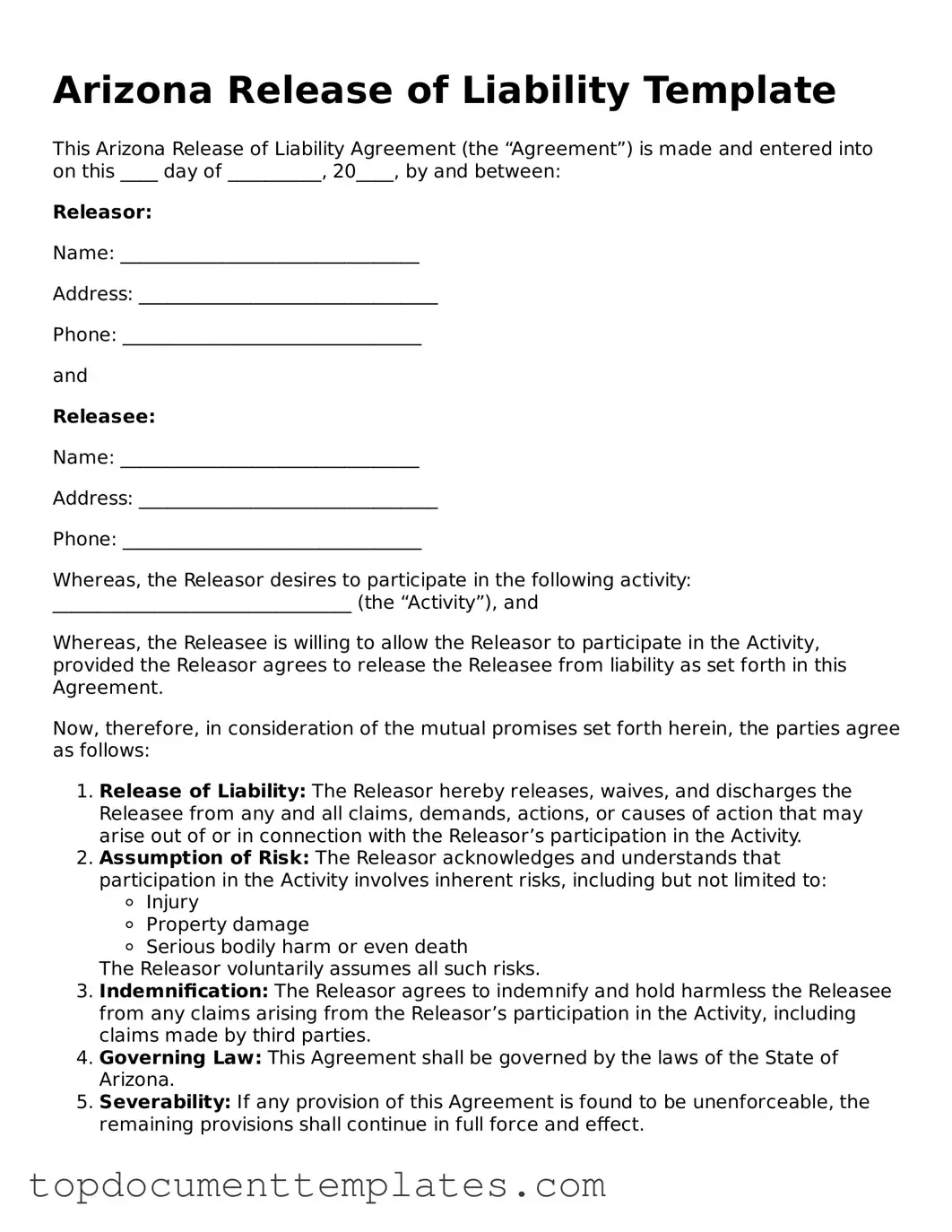Valid Release of Liability Form for Arizona State
The Arizona Release of Liability form is a legal document that helps protect individuals and organizations from being held responsible for injuries or damages that may occur during specific activities. By signing this form, participants acknowledge the risks involved and agree to waive certain rights. If you're considering participating in an event or activity that requires this form, it's important to understand its implications.
Ready to take the next step? Fill out the form by clicking the button below.
Open This Form
